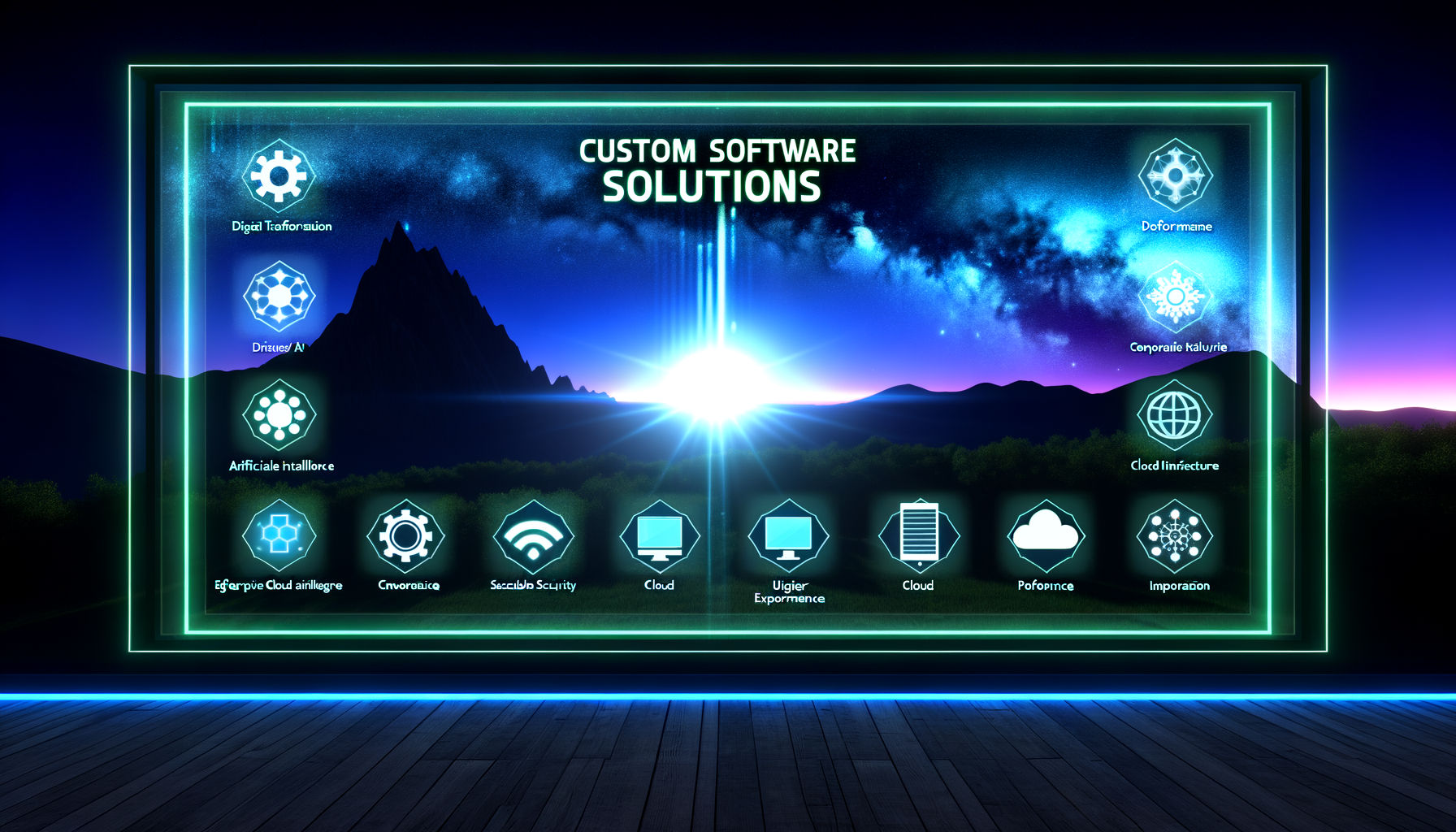Imagine a world where your software not only meets your needs but anticipates them. In 2025, every successful enterprise will leverage custom software solutions to achieve unprecedented growth. With Quicklook's expertise, you can transform your operations with tailored applications that scale efficiently and integrate seamlessly with AI. Whether it's modernizing legacy systems or deploying a new cloud-native application, our solutions drive measurable impacts. Let's explore how you can lead the charge in digital transformation.
Custom Software: The Enterprise Advantage

A team in a code-review collaboration session.
Custom software development isn't just about building apps—it's about creating strategic assets that align with your business goals. Unlike off-the-shelf solutions, custom applications offer tailored functionality that can streamline processes and enhance productivity.
Industries across the Pacific Northwest are increasingly turning to custom solutions for competitive advantage. Imagine a logistics firm that needs a bespoke tracking system or a healthcare provider requiring a unique patient management platform. Custom software meets these needs precisely.
With custom app development, you gain flexibility and control over your tech stack, enabling you to integrate the latest technologies as they emerge. Quicklook's tailored SaaS solutions empower you to adapt swiftly to market changes.
LIST
- •Tailored functionality
- •Greater flexibility
- •Seamless integration
AI Integration in Custom Apps

Diagram showing AI integration into software architecture.
Integrating AI into your custom applications can transform how you operate. In 2025, AI-driven custom app development is not just a trend but a necessity for companies aiming to optimize their operations and customer interactions.
AI can enhance user experience, automate routine tasks, and provide data-driven insights that inform decision-making. For instance, Quicklook's AI solutions enable real-time analytics and predictive modeling, crucial for industries like finance and retail.
By embedding AI into custom applications, you can offer personalized experiences to your users and improve overall efficiency. This integration helps businesses stay ahead of the curve and maintains a competitive edge.
CALLOUT
AI-driven apps increase efficiency by up to 30%.
The Role of Microservices

Diagram of a microservices architecture setup.
Microservices architecture is revolutionizing custom software development by enhancing scalability and resilience. Unlike monolithic architectures, microservices break down applications into smaller, independent services that can be developed, deployed, and scaled autonomously.
This architecture allows for rapid updates and deployment without disrupting the entire system. For example, an e-commerce platform using microservices can update its payment service without affecting the inventory or user interface modules.
Quicklook's cloud-native applications leverage microservices to ensure that your software can grow with your business, adapting to increased loads and evolving requirements seamlessly.
QUOTE
"Microservices offer unparalleled flexibility and scalability in software development."
Security Best Practices

Illustration of a secure software architecture.
Security is paramount in custom software development. As enterprises increasingly depend on digital solutions, the risks associated with cyber threats grow. Implementing custom software security best practices is crucial to safeguarding sensitive data and maintaining customer trust.
Quicklook employs enterprise-grade security measures, including end-to-end encryption, regular security audits, and compliance with industry standards such as GDPR and CCPA.
Our security-first approach ensures that your custom applications are not only innovative but also robust against potential threats, thereby protecting your business and your customers.
LIST
- •End-to-end encryption
- •Regular security audits
- •Compliance with GDPR/CCPA
Cost-Effective Development with Low-Code

Graph showing the impact of low-code on development speed.
Low-code platforms are changing the landscape of custom software development by reducing the complexity and cost associated with building applications. By using visual development tools, low-code platforms accelerate the development process, making it accessible to both developers and non-developers.
These platforms allow for rapid prototyping and deployment, which is particularly beneficial for startups and SMBs looking to test and iterate quickly. Quicklook's expertise in low-code platforms ensures that you can bring your ideas to life faster and more efficiently.
By leveraging low-code in 2025, businesses can reduce development time by up to 70%, allowing them to focus resources on innovation and growth.
CALLOUT
Low-code reduces development time by up to 70%.
Frequently Asked Questions
QWhat are the key benefits of integrating AI into custom app development in 2025?
QHow do low-code and no-code platforms impact the speed and cost of custom software development?
QWhat role does microservices architecture play in enhancing the scalability of custom applications?
Conclusion
Custom software solutions provide the flexibility and innovation required for modern enterprise growth. By integrating AI, leveraging microservices, and employing low-code platforms, businesses can enhance their competitive edge.
Future Vision
As technology evolves, staying agile and adaptable with custom solutions will define the leaders of tomorrow.
Schedule your AI audit with Quicklook.
